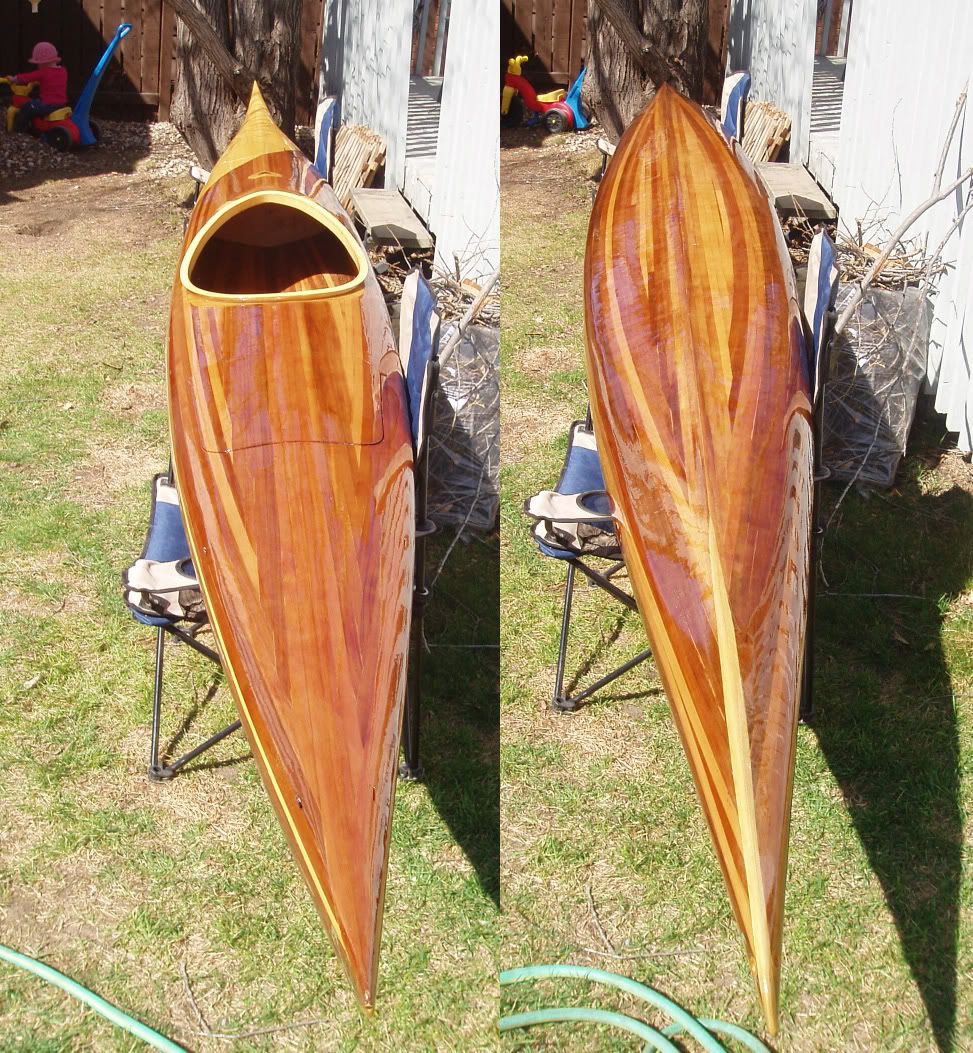

One more coat of varnish on the deck and I think that's it for varnishing.
Tales of boatbuilding, family, paddling, music, camping, football, snowshoeing, kids, cycling, and whatever else suits my fancy.


 A self portrait:
A self portrait:
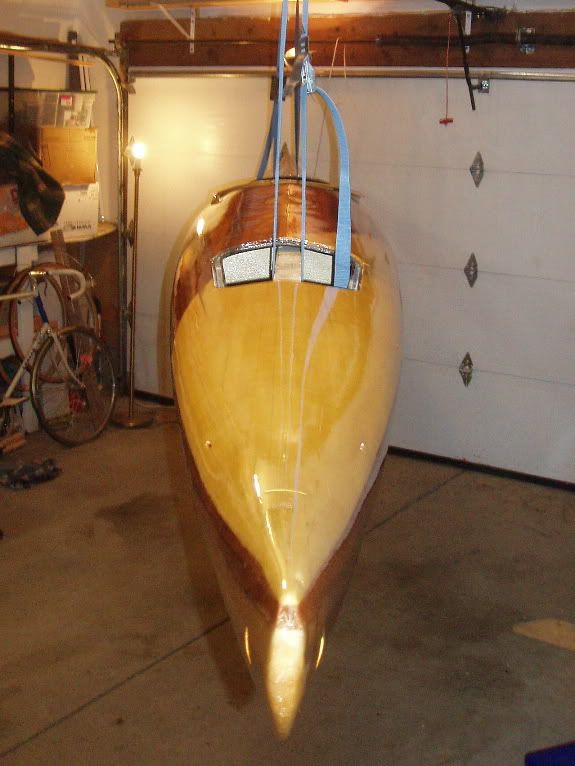
From the bow at the waterline:
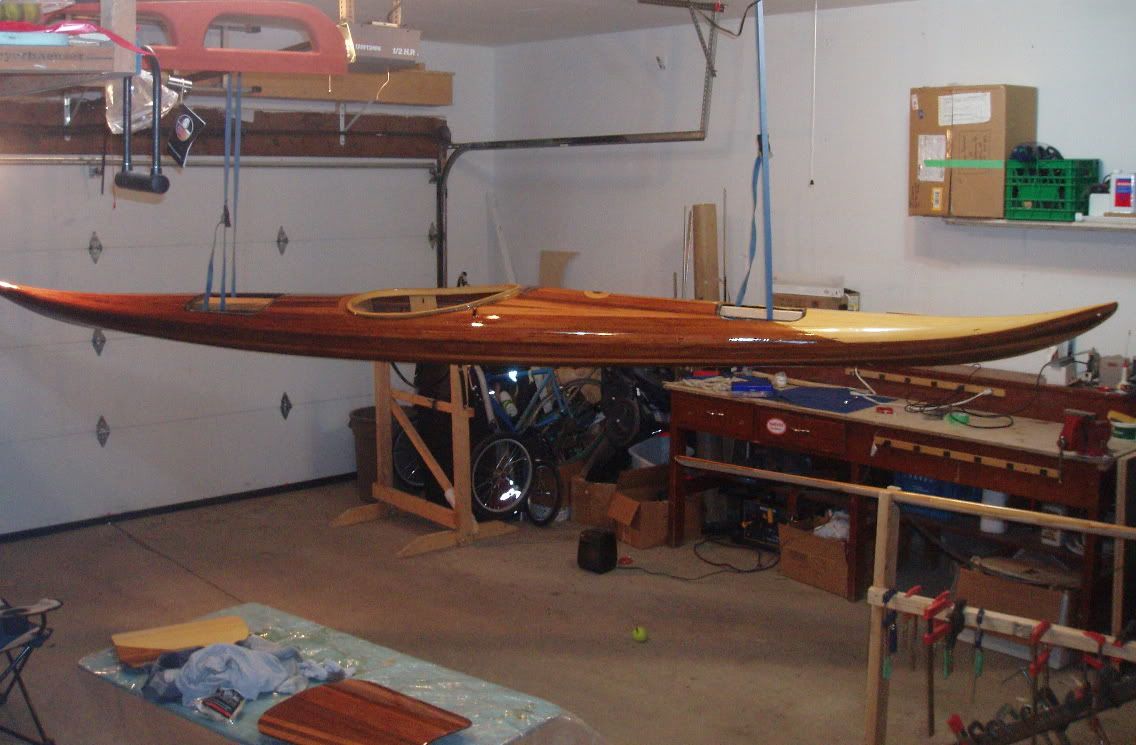

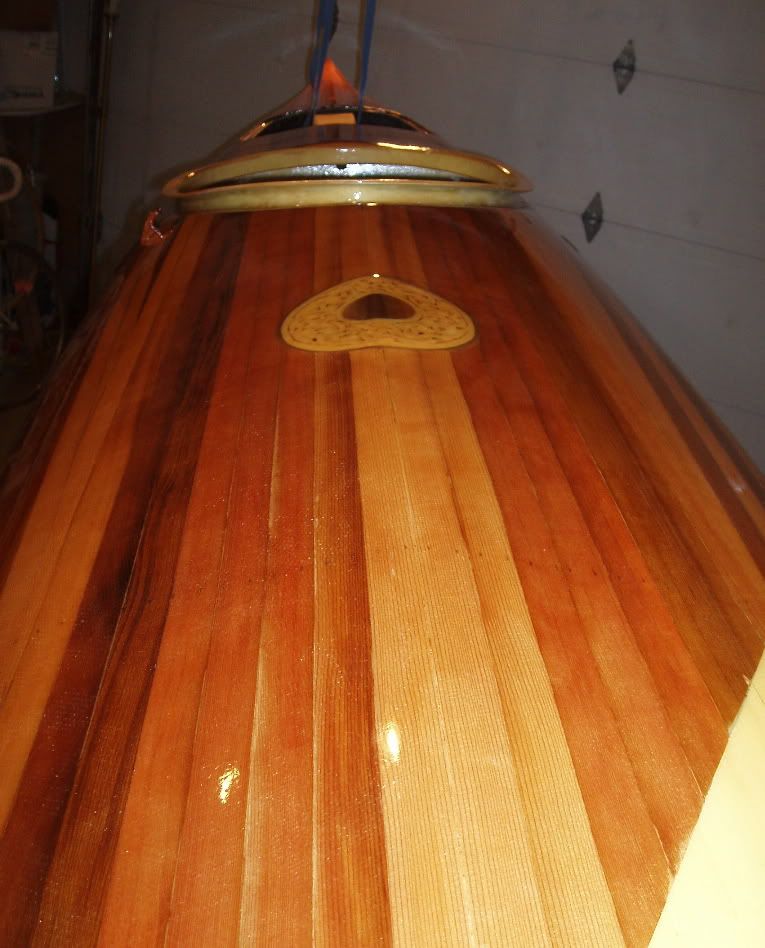
Now while the varnish dries I'm going to re-read Martin Step's varnishing advice from Green Valley Boat Works.

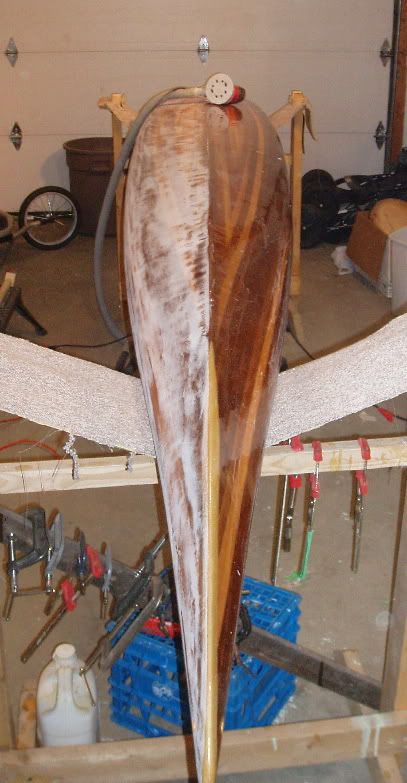
In the photo above I have just started with 80 grit on the hull. The spots that still have the gloss of un-sanded epoxy are low spots. Since my fiberglass job was imperfect, there are areas where I cannot remove all of the high spots without sanding into the glass cloth, something to be avoided. I have the dust collection bag container on the back of my sander removed and vacuum hose connected in it's place. With the sander connected to the shop vac the majority of the dust is collected. The use of a HEPA filter in the shop vac prevents the vacuum from simply acting as a dust pump & exhausting the very fine dust into the air (where it would be inhaled: the finer the dust => the more it goes through a regular filter => the deeper it is carried into the lungs). This reusable filter is highly recommended and will protect your shop vac motor as well as your lungs.

To avoid breathing in the dust that is not sucked up by the vacuum (a fairly small proportion) I wear a dust mask. If working with epoxy which is not fully cured, I use a more substantial mask with carbon cartridge filters.
Now with the boat entirely sanded it doesn't look too pretty anymore. In sanding I found a couple of spots where I would like to touch up the epoxy. One of these spots is at the area surrounding the paddle park hook that I installed. Another is at the tip of the stern where the bow and hull were joined - the halves did not meet perfectly there and as a result the tip has a small gap (perhaps 3/16" long) on one side that remains. The third spot is at the location of the bubble that kept reappearing when glassing the outside seam and the subsequent fill coats.
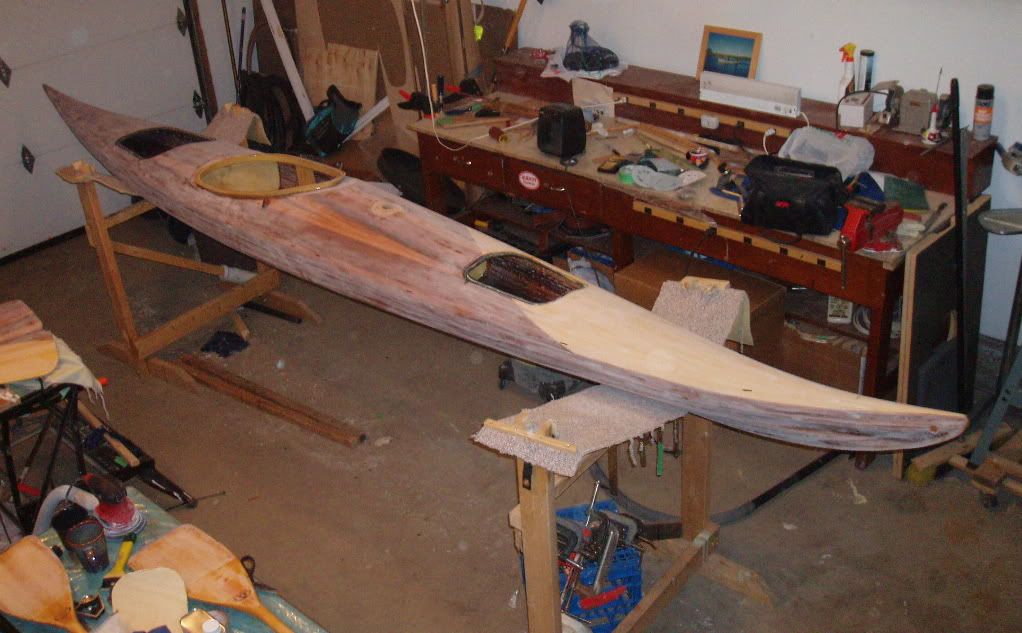
My plan is to touch up those epoxy spots, let them cure then get them faired into the rest of surface. With that done I can then clean up the shop, rid my life of every speck of dust (ha!) then begin the varnishing. In the meantime, here is an article on varnishing courtesy of Martin Step at Green Valley.

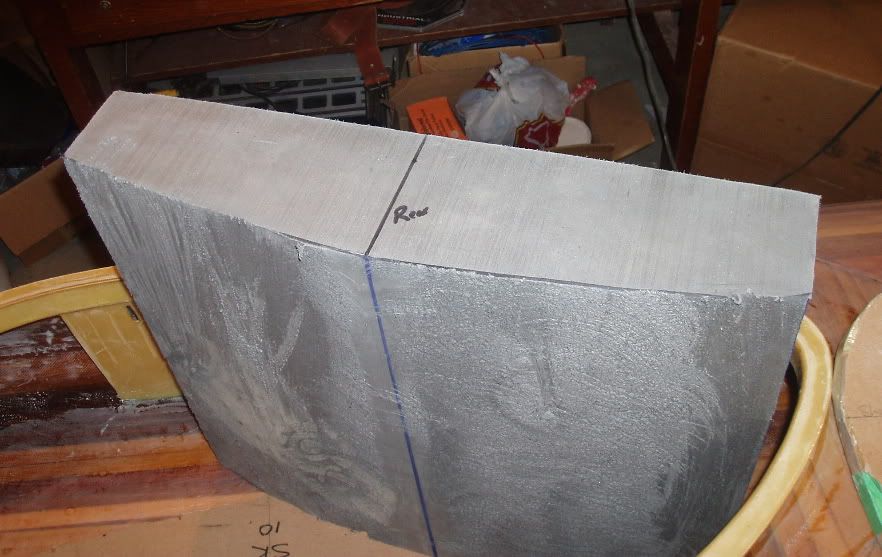
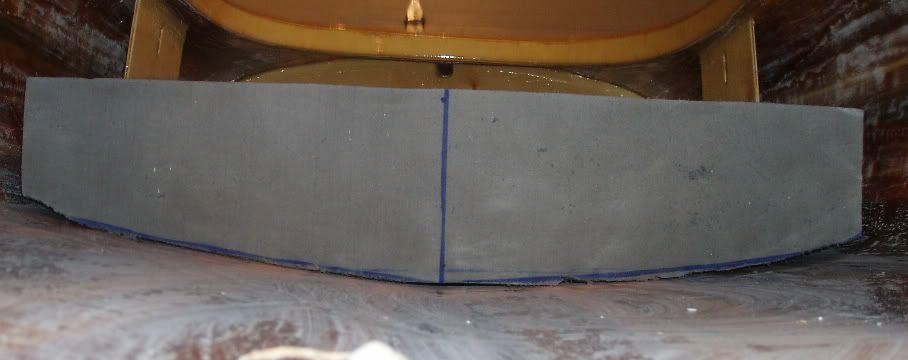
Since I cut a bit outside the lines with the saw, I used a wheel in my drill designed for stripping paint (about 5-6" in diameter, found at the local Canadian Tire). This wheel seems to work well for the task and I think it will do the job of shaping the top to fit a bum. One has to be careful in using it though because it does tend to catch and want to gouge if the angle is held too high (this is why I practiced with it on the bottom!). My next steps will be to follow the seat carving instructions laid out on the Shop Tips section of the One Ocean Kayaks web site.